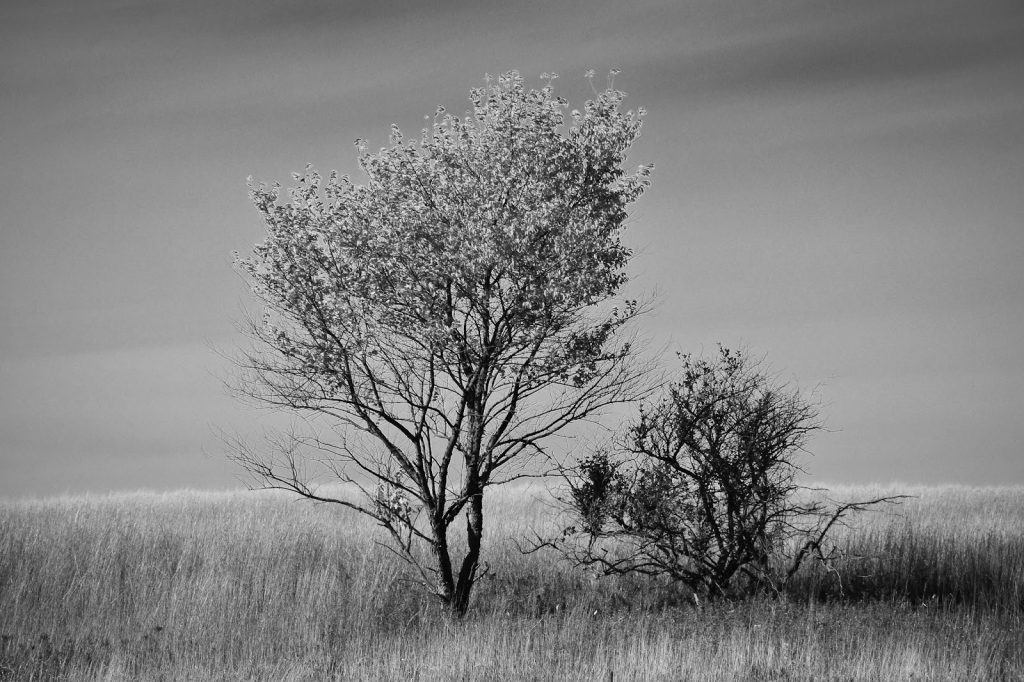Navigating Climate Anxiety

Photo taken by Jeremy Cownover
On a walk through the St. Olaf Natural Lands, the prairie grass dances in the wind, and the air hums with late-summer insects. The landscape feels both grounding and fragile. It is hard not to think about the uncertain future these ecosystems face and the uneasiness that comes with it. In moments like these, I often find myself asking the question: How do we hold onto hope while facing climate anxiety?
This semester, in my Environmental Studies senior seminar, we just finished reading A Field Guide to Climate Anxiety by Sarah Jaquette Ray. This book is a valuable resource for navigating life during the Anthropocene. Ray names the guilt, grief, and burnout that so often accompany environmental awareness and social justice. Rather than fueling despair, she encourages curiosity over judgment and reminds us that resilience is just as important as activism.
Climate anxiety is more than simply worrying about the environment. It is a mixture of guilt, grief, fear, and exhaustion. For college students, this often shows up in specific ways: balancing academics with activism, feeling uncertain about future career paths, or carrying the pressure of knowing too much about the scale of global crises. Ray points out, “The entities that benefit from social injustice are often the same entities that drive climate change, and the polarization of contemporary politics inhibits progress on addressing these issues” (Roy 6).
One of Ray’s most important lessons is that we are not meant to carry this burden alone. Community is essential. Weather in the classroom, through student clubs, or with friends on a walk, sharing our concerns transforms despair into solidarity. She also reminds us that, “Those of us who feel the most passionate about social change are also the most likely to fail to be considerate of ourselves” (Ray 128). That truth resonates deeply with students who are often encouraged to push harder, study longer, and produce more, without pausing to care for their own well-being.
Photo taken by: Ellie Kosek
Ray offers a set of strategies that feel both hopeful and practical:
- Lead with curiosity rather than judgment, especially in divisive conversations.
- Slow down and notice your emotions, instead of trying to outrun them.
- Embrace imperfect action, rather than waiting until you can “do everything”.
The Natural Lands themselves are a resource for this kind of healing. Time spent under the oaks or among the prairie grasses offers perspective and calm. Practicing mindfulness outdoors–noticing the colors of a changing sky or the rustling of wind in the trees–anchors us in the present moment. Ray emphasizes that mindfulness and self-preservation are not distractions from the climate movement. They are what sustain it.
Another form of action is self-preservation. As Ray argues, self-preservation is an act of political warfare (Ray 130). This mindset runs counter to our culture of nonstop productivity, but it is essential. Without care for ourselves, we risk exhaustion and burnout. Climate activism often carries a sense of urgency; change is needed right now. That urgency is valid, but no one can sustain the fight alone. Relying on community support and pacing ourselves ensures long-term effectiveness. Rest, nourishment, and connection with loved ones are not distractions from the work; they are what allow us to stay engaged with it.
Photo taken by Chaemin Kim
Mindfulness is a valuable tool for dealing with climate anxiety. Practicing mindfulness helps anchor us in the present moment. Prioritizing self-care and mindful awareness is vital for anyone hoping to live sustainably in today’s world. In her Field Guide to Climate Anxiety, Ray offers strategies for confronting the emotional weight of climate work: guilt, grief, fear, and the uncertainty of our planet’s future. She reminds us that recognizing our own influence, however small, is what ultimately fuels change.
The largest drivers of climate change demand systemic and institutional reform; however, individuals can still hold meaningful power to create change. Start contributing locally; within your family, neighborhood, or community. Even the simplest actions, such as starting a compost, joining a local movement, or a group you can contribute to. These actions may seem small, but every action has a ripple effect. In the face of overwhelming global crises, it’s easy to feel powerless. Yet consistent small-scale efforts, carried out with dedication, truly matter. These everyday acts may go unnoticed, but they are often the foundation of larger transformations. We must acknowledge the enormity of climate challenges without letting them paralyze us; when problems appear too big, solutions feel out of reach. By centering our energy on what we can control, we not only make progress but also bring relevance to our daily lives.
As fall settles over the prairies, the shifting colors remind us that transformation often happens gradually, almost unnoticed. Addressing climate change will be the same: many small acts carried out with care and consistency. My hope is that students and community members alike will spend more time in the Natural Lands, finding strength and hope in these places as we learn to navigate climate anxiety together.
You must be logged in to post a comment.